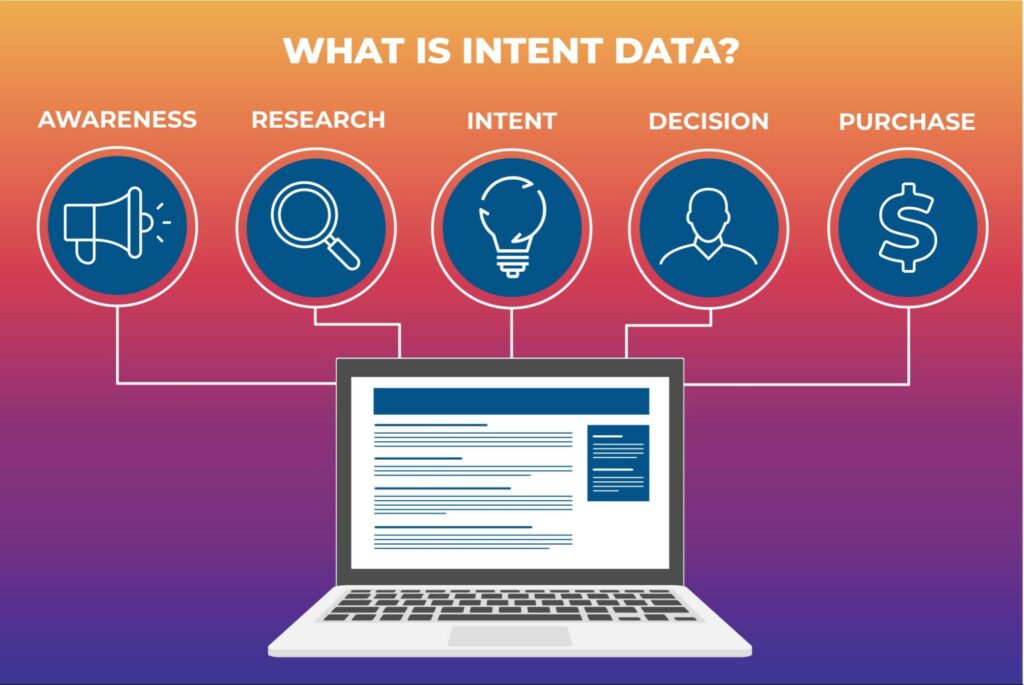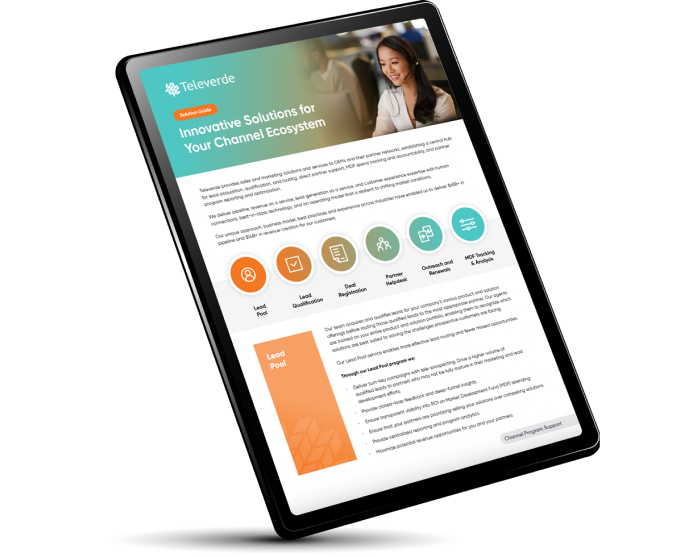The Role of Intent Data in Driving High-Conversion Lead Generation
Effective lead generation is essential in B2B marketing, where the focus is on attracting high-quality leads that convert into customers. The use of B2B Marketing Analytics is critical in this effort, enabling marketers to target and engage prospects with unprecedented precision.
Intent data plays a pivotal role within these analytics tools. By harnessing this data, businesses can identify potential customers and understand their purchasing intentions. This capability provides a significant competitive advantage, enabling the creation of targeted marketing campaigns that directly address the needs and behaviors of prospects.
As we explore the impact of intent data, you’ll see how it enhances lead generation strategies and boosts conversion rates. Understanding and utilizing B2B marketing analytics is crucial for companies aiming to drive growth and maintain market relevance.
Quick Takeaways
- Intent data provides critical insights into prospective buyers’ research behaviors and purchasing intentions, enhancing targeted marketing efforts.
- By incorporating intent data into B2B marketing analytics, businesses can significantly improve targeting, segmentation, and personalization of marketing campaigns.
- Utilizing intent data optimizes lead scoring, enables dynamic content delivery, and ensures timely interactions, leading to higher conversion rates.
- While intent data is transformative, it requires careful management of data quality, integration challenges, and privacy concerns to fully leverage its benefits in B2B marketing.
Understanding Intent Data
Intent data refers to the information collected about an organization’s potential buyers based on their online activities. This data provides insights into what these prospects are researching, which problems they are trying to solve, and where they are in the buying cycle. Sources of intent data can include:
- Engagement with specific content on your site
- Interactions on social media platforms
- Responses to marketing campaigns
This information is vital because it offers a direct window into the buyer’s interests and readiness to purchase, allowing for more informed marketing and sales strategies.

By analyzing patterns in intent data, companies can predict which prospects are warming up to a purchase and tailor their outreach accordingly.
The Role of Intent Data in B2B Marketing Analytics
Integrating intent data into B2B marketing analytics tools allows companies to achieve a deeper understanding of their market’s dynamics. These analytics provide a structured way to interpret vast amounts of data and transform them into actionable insights.
Here’s how intent data serves as a key player:
- Targeting and Segmentation: Intent data enables marketers to segment their audience more precisely. By understanding the topics and solutions potential clients are exploring, marketers can create segments based on actual interest and engagement levels, rather than broad demographic information.
- Predictive Analytics: With intent data, predictive models can forecast future buying behaviors, identifying which leads are most likely to convert. This predictive capability makes it possible to prioritize leads based on their likelihood to engage or make a purchase, optimizing the sales team’s efforts.
- Personalization: Armed with specific insights about a prospect’s interests and needs, marketing teams can craft personalized messages that resonate more effectively. This targeted approach improves engagement rates and enhances the customer experience by presenting solutions that meet the prospects’ specific challenges.
Through these applications, intent data becomes essential to an effective B2B marketing strategy, enabling businesses to move beyond traditional metrics and dive into a deeper, more nuanced understanding of their potential customers.
Enhancing Lead Generation with Intent Data
Intent data transforms the approach to lead generation by making it more focused and efficient. Here are key ways in which intent data drives high-conversion lead generation:
Enhanced Lead Scoring
Intent data adds a layer of behavioral insights to traditional lead scoring models. Marketers can score leads based on demographic information, online behaviors and engagement levels. This approach allows sales teams to prioritize leads who show real-time interest in specific topics related to your products or services.
Dynamic Content Delivery
By understanding the current interests of prospects, marketers can dynamically tailor the content on websites and in email campaigns to match the topics that visitors are most likely to engage with. This relevance in content delivery significantly boosts the likelihood of conversion.
Timely Interactions
Knowing when a prospect is exploring relevant topics allows sales and marketing teams to time their outreach perfectly. Engaging a prospect when their interest is peaked increases the chances of moving them further along the sales funnel.
These strategies underscore the importance of intent data in identifying potential customers and engaging them at the most opportune times with the most relevant content, substantially increasing the odds of conversion.
Best Practices for Implementing Intent Data in Your Marketing Strategy
To effectively leverage intent data, consider the following best practices:
- Data Integration: Ensure that intent data feeds into your CRM and marketing automation platforms. Seamless integration allows for the continuous flow of information and enables more sophisticated marketing and sales tactics based on up-to-date data.
- Continuous Monitoring and Analysis: Intent data is most valuable when it’s part of an ongoing analysis. Regular monitoring of intent signals can help adjust strategies in real-time, responding to shifts in market behavior or interest.
- Collaboration Between Teams: Marketing and sales teams should work closely using intent data to align their strategies. This collaboration ensures that marketing efforts support sales objectives, particularly in timing and message consistency across channels.
- Privacy Compliance: Always consider the legal aspects of using intent data, especially regarding privacy laws like GDPR or CCPA. Ensure that your data collection and usage practices comply with all relevant regulations to maintain trust with your audience.
Implementing these best practices will help maximize the benefits of intent data, turning it into a powerful tool for refining marketing strategies and enhancing the effectiveness of lead generation efforts.
Challenges and Considerations
While intent data can significantly enhance lead generation and customer targeting, its implementation comes with several challenges that businesses must navigate carefully. Here are some common issues and practical solutions:
Data Quality and Accuracy
The effectiveness of intent data depends heavily on its accuracy and relevance. Poor data quality can lead to misguided strategies and wasted resources.
Solution: Partner with reputable data providers and continuously validate the accuracy of the data through testing and feedback from sales results. Employ multiple data sources to cross-verify information and enhance reliability.

Integration Complexity
Integrating intent data with existing systems can be technically challenging, especially for organizations with legacy systems or complex IT infrastructures.
Solution: Invest in scalable and flexible marketing technology platforms that can integrate smoothly with various data sources. Consider working with integration specialists to ensure that systems are properly configured to handle new types of data.
Overreliance on Data
While intent data is powerful, relying solely on it without considering the broader context can lead to skewed perceptions of customer behavior.
Solution: Use intent data as one component of a holistic marketing strategy. Combine it with other metrics and insights, such as demographic data and direct customer feedback, to form a well-rounded view of your audience.
Privacy and Compliance
With increasing scrutiny on data privacy, using intent data responsibly is crucial to maintain trust and comply with legal standards.
Solution: Stay informed about data privacy laws and regulations in all operational regions. Implement robust data governance policies to ensure ethical data usage and protection of consumer privacy.
Keeping Data Actionable
The volume of data available can be overwhelming, and not all intent signals are equally valuable. Determining which data points are actionable can be a challenge.
Solution: Prioritize data according to its impact on your business objectives. Develop clear criteria for what constitutes actionable intent data, focusing on those signals that directly correlate with conversion and customer engagement.
Maximize B2B Marketing Analytics Today with Televerde
Intent data offers unparalleled insights into buyer behavior, enabling B2B marketers to enhance lead quality and conversion rates effectively. However, its success hinges on strategic integration, ongoing analysis, and adherence to privacy standards. By navigating these challenges wisely, businesses can unlock the full potential of intent data to drive their marketing efforts forward.
Ready to harness the power of intent data and transform your lead generation strategy? Contact Televerde today to discover how our solutions can integrate intent data into your marketing efforts, helping you target the right prospects at the right time. Reach out now to learn more and take your B2B marketing to the next level!


